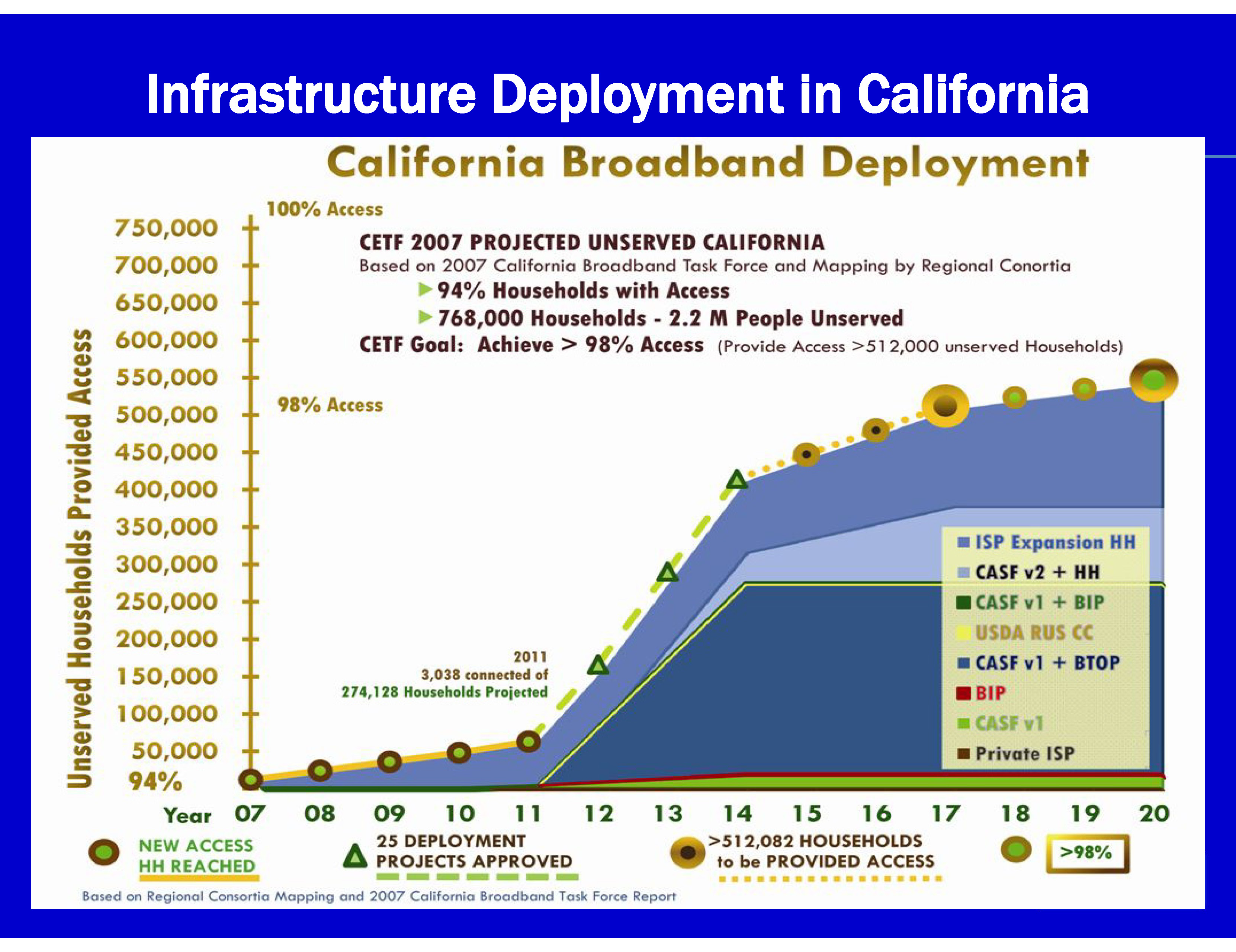Broadband: Digital Pathway to Economic Prosperity
Our ability to connect through high-speed Internet access-referred to generically as “broadband”-is improving our lives in many ways-helping us share information and images, research and apply for jobs, stay in touch with loved ones, and access entertainment and news. Broadband saves consumers time and money, increases productivity in the economy, and reduces impacts on the environment. Broadband is essential 21st Century infrastructure in a digital world and global economy. It is vital to the economic prosperity of every community and the quality of life for all residents. And, it is a “green” strategy to shrink our carbon footprint.
Persistent Digital Divide
A significant Digital Divide persists in California manifested by substantial differences among population groups and regions in the use of broadband. For example, only 49% lower-income households (under $40,000 annually), 50% of Latino families, and 55% people with disabilities have a broadband connection at home compared to 70% of all adults statewide and 94% of all higher-income households ($80,000 or more annually). Many rural and remote communities have no access at all and there are great variations among regions, with 64% of the Central Valley residents having a home broadband connection versus 79% in the Bay Area. This gap among regions and socio-economic segments of the population is referred to as the Digital Divide.
Progress Is Being Made
Overall, the trends are encouraging as evidenced by the changes between 2008 and 2010 in the statewide survey conducted by the Public Policy Institute of California (PPIC) that is co-sponsored by the California Emerging Technology Fund and ZeroDivide. In addition, the California Public Utility Commission (CPUC) has approved broadband infrastructure applications to the California Advanced Services Fund (CASF) that have the potential to reach about half of the currently underserved households in California if federal economic stimulus funds are awarded. The graphs show both the progress to date and the projected timeline paths to success in closing the Digital Divide. The goal is to reach 98% of all residences with broadband and to achieve 80% adoption statewide by 2015 in order to remain globally competitive. Local and regional leadership is needed to achieve the goal.

